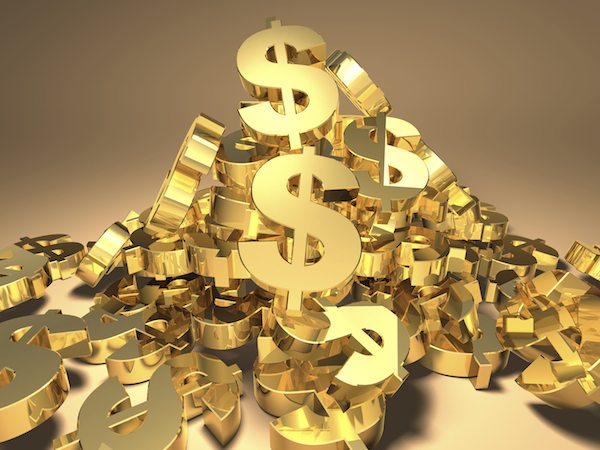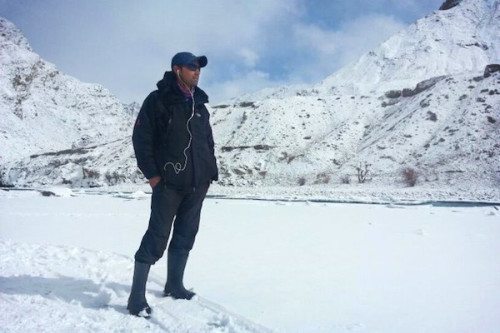The next big expense bucket is the actual expedition cost. There are fees every climber and expedition must pay, directly or indirectly: a climbing permit, liaison officer, visa, park fee, yaks, porters, icefall ladders and fixed ropes, waste deposit, travel, insurance, tents, food, and fuel. At a minimum, these total $22,000 for one person going alone.
To add to this heady mix of expenses (if you were not feeling light-headed enough), you are embarking on an expedition into extremely rarified atmosphere, thus necessitating oxygen. Each climber must plan for at least eight oxygen cylinders for him and his Sherpa to ensure a realistic chance of hitting the summit as well as returning safely. At $700 a cylinder, that cost comes to $5,400.
Extreme temperatures, incredibly low wind-chill factors, and the harsh terrain compels us to invest in specialized equipment. Everest-grade expedition climbing boots, down suits and other apparel, and thermal layers add up to another $5,000. Finally, this does not include tips for the team and staff who sustain you for the period of two months while on the glacier, which can be a couple of thousand dollars in total.
The Chase
The toughest challenge associated with this expedition, before we even begin to climb the mountain, is of course raising this incredible amount of money.
Most climbers on big mountain expeditions become extremely creative when it comes to raising capital for their climbs, and so were we. Among the options we considered but did not exercise were taking bank loans, refinancing our home loans, and trying to chase down the proverbial rich uncle.
Our major source of revenue has been through personal funding: that is, setting aside money every month and making it a priority in our monthly savings. It also goes without saying that my family (my wife, dad and mom, my sister and brothers, not to forget my cousins) have been incredibly supportive, both physically and financially taking on a huge chunk of the cost.
One incredible experience, which I am guilty of initially dismissing, is raising money through the medium of crowd funding. Crowd funding is an appeal to the masses to help support a cause, requesting small amounts of money but in the process targeting an extremely large population. Established websites such as Ketto.org, Milaap.com, and Kickstarter.com help add structure to the project and (more importantly) allow you to receive payments through a payment gateway.
However, I decided to go about it in a more personal way. I drafted an appeal and circulated it among my 500-odd friends on Facebook. I then requested them to circulate it among their friends, and so on. Immediately, the responses started trickling in; and then it became a flood of not just contributions, but messages and goodwill, words of encouragement and support. Friends from school to whom I hadn’t spoken for 10-15 years reached out to me, and my biology teacher from the 9th grade contributed INR10,000 though she last saw me in a scruffy school uniform and unpolished shoes. One particular friend, an old college buddy, transferred an amazing US$1,600 to my account.
This entire experience of crowd funding has just been incredible. In a period of 45 days, we raised a fantastic sum of $US12,000 / INR7,000,000 , but the goodwill and support has been priceless.
Often, the first resort is to try obtaining a sponsor, for example by one of the large outdoor gear companies. It is extremely difficult to get on a sponsored team. Other companies are often hesitant to endorse big mountain expeditions for numerous reasons, the high risk factor being the largest. There are ways to obtain a sponsor, but it takes years of work, a solid plan, and proven experience. Often it comes down to whom you know and a lot of luck.
In our case, we acquired a few sponsors, but had to deal with the heartache of them pulling out. That happened as recently as last week, just a month short of the expedition. Fortunately for me, Druva Software, my extended family, has been incredibly supportive and encouraging. The core management team, Jaspreet and Milind, have been incredibly consistent in their support, encouragement, and words of wisdom. They give me incredible confidence in my endeavor to reach new heights – literally!
All in all, from my experience, I have learnt that an expedition to the Top of the World is not just about determination, physical grit, and mental toughness. It requires an uncanny amount of resourcefulness in terms of leveraging such large finances. In trying to raise finances for this expedition, I have, without a doubt, developed more business acumen in the last year than in all my years of pursuing my MBA or in my career in the corporate world. Though I am still short by about 20% of the amount needed, I am still adamant on setting out on this epic odyssey to reach the Top of the World, with the eternal hope that it will all come together in the end.
If you want to help Sauraj meet his goal, you can contribute to his Milaap campaign.
More about his climb:

